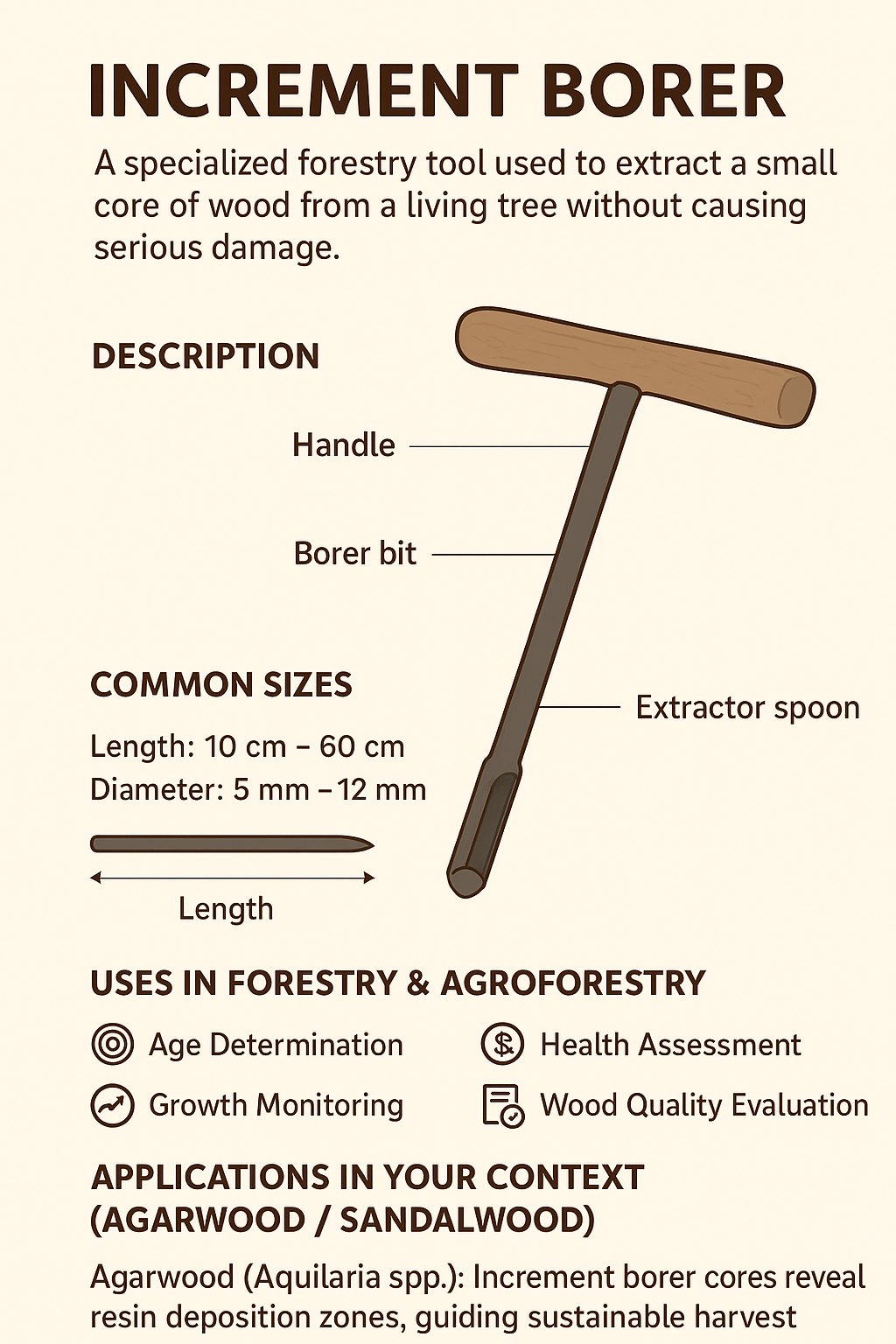Increment Borer
₱12,000.00
An increment borer is a specialized forestry tool used to extract a small core sample from a tree’s stem (usually at breast height) without causing significant harm to the tree. It’s essential for measuring tree growth, estimating age, and analyzing wood quality. Here’s a complete insight into its function, uses, and relevance to forestry and agroforestry ventures:
What is an Increment Borer?
A T-shaped manual coring tool made of hardened steel, consisting of:
- Handle (usually wooden or metal)
- Auger bit (threaded spiral blade for drilling)
- Extractor spoon (to remove the wood core from the auger)
Primary Uses
- Determine Tree Age
- By counting the annual growth rings on the extracted core sample.
- Measure Growth Rate
- Analysis of ring width gives insight into how fast the tree has been growing—critical in forestry and carbon stock assessment.
- Estimate Timber Volume & Quality
- Helps evaluate density, wood defects, or rot inside the tree.
- Research and Monitoring
- Tree-ring data (dendrochronology) used in climate change studies, forest health monitoring, or ecological restoration.
- Non-Destructive Sampling
- Unlike felling, the increment borer provides valuable internal data without cutting down the tree.
In agroforestry ventures, Agarwood research, the increment borer can help:
- Assess Aquilaria malaccensis growth and stress history (especially pre- and post-inoculation).
- Estimate optimal harvest age for resin production.
- Study effects of biotic/abiotic stress from inoculants like Fusarium oxysporum (e.g., resin zone depth vs. age).
- Monitor wood density changes due to induced resin formation.
Precautions & Best Practices
- Sterilize the tool before and after use to avoid disease transmission.
- Core only once per tree (or at 90° from a previous core if repeated).
- Apply tree wound sealant if needed.
- Limit coring during active growing or rainy seasons to reduce risk of infection.



